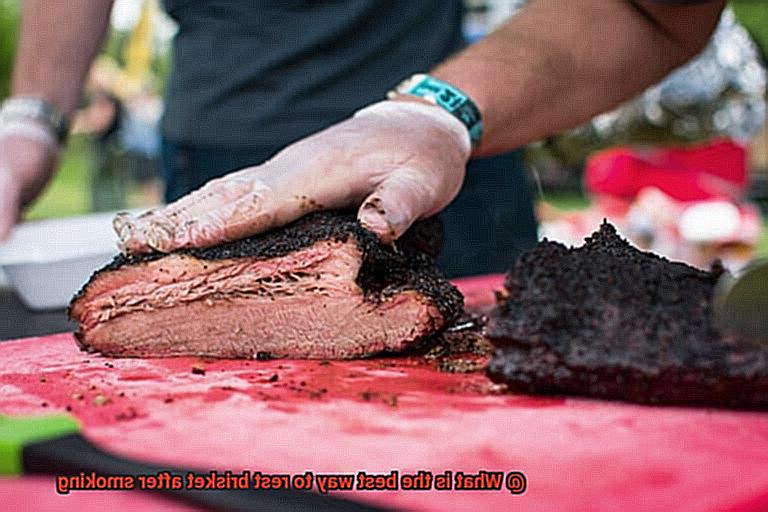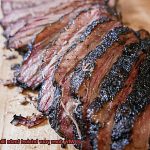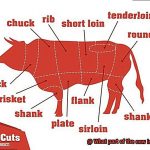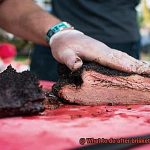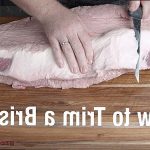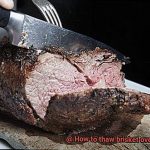Are you a barbecue enthusiast who loves nothing more than smoking a perfect brisket?
If so, you know that it takes skill, patience, and a whole lot of love to get that meat just right. But did you know that resting your brisket is just as important as smoking it?
Resting is the key to achieving a moist, tender, and flavorful brisket. It allows the juices and flavors to distribute evenly throughout the meat.
But what’s the best way to rest your brisket after smoking it? Should you wrap it in foil or paper, or simply let it sit on a cutting board?
In this informative blog post, we will be delving into the art of resting brisket after smoking. We’ll explore all the different options available to you and how each one can affect the final outcome of your brisket.
We’ll also be taking a close look at the crucial time frame for resting your meat and how to prevent it from drying out during this process. Whether you’re an experienced pitmaster or just starting out, this blog post will provide you with invaluable information on how to rest your brisket perfectly every time.
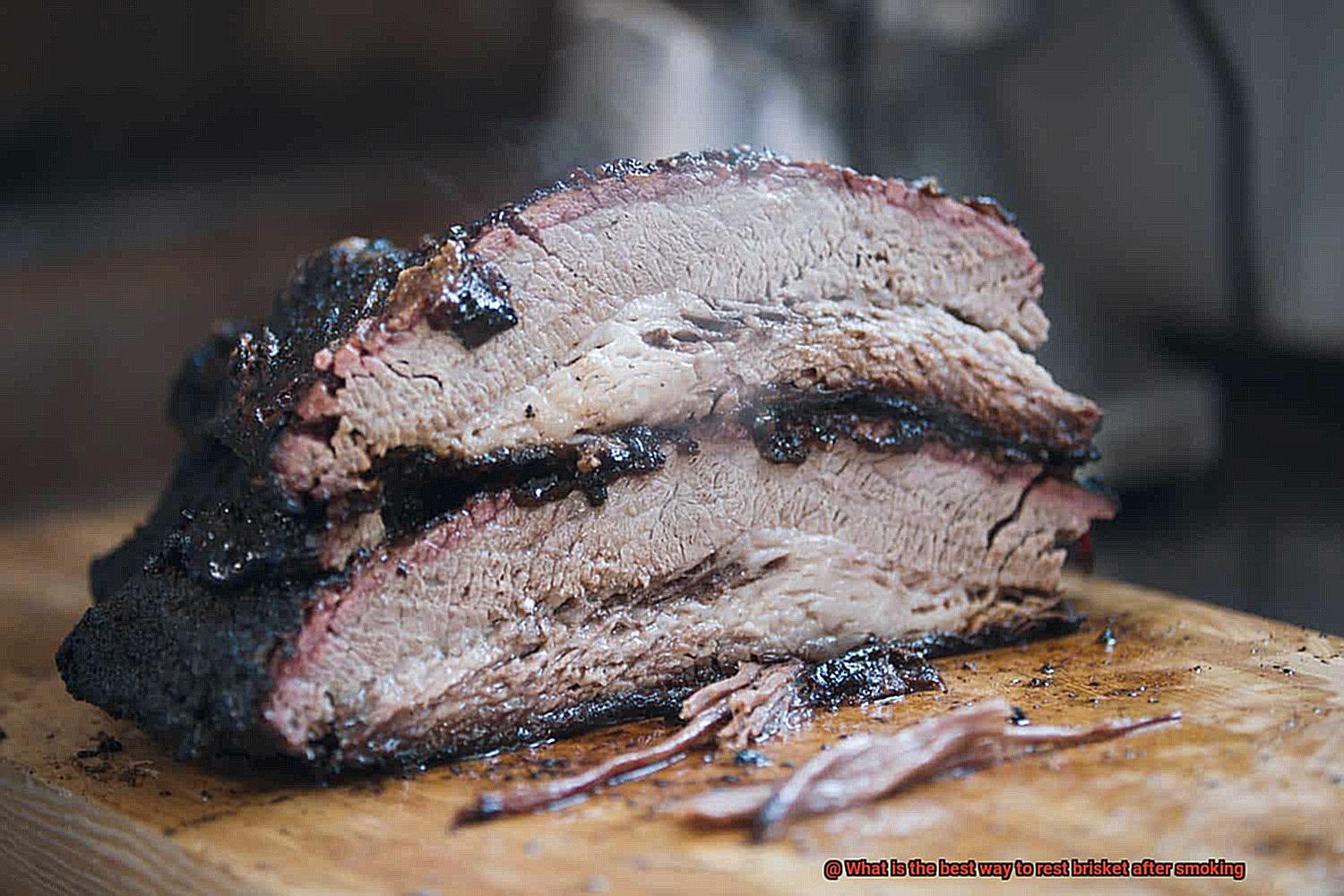
Don’t miss out – let’s dive in.
Contents
Remove from Smoker at Proper Internal Temperature
Smoking a brisket is an art form that requires patience, skill, and a lot of love.
But even after all the hard work during the smoking process, the resting period is just as crucial for achieving the perfect brisket. And one of the most critical steps during this process is removing it from the smoker at the proper internal temperature.
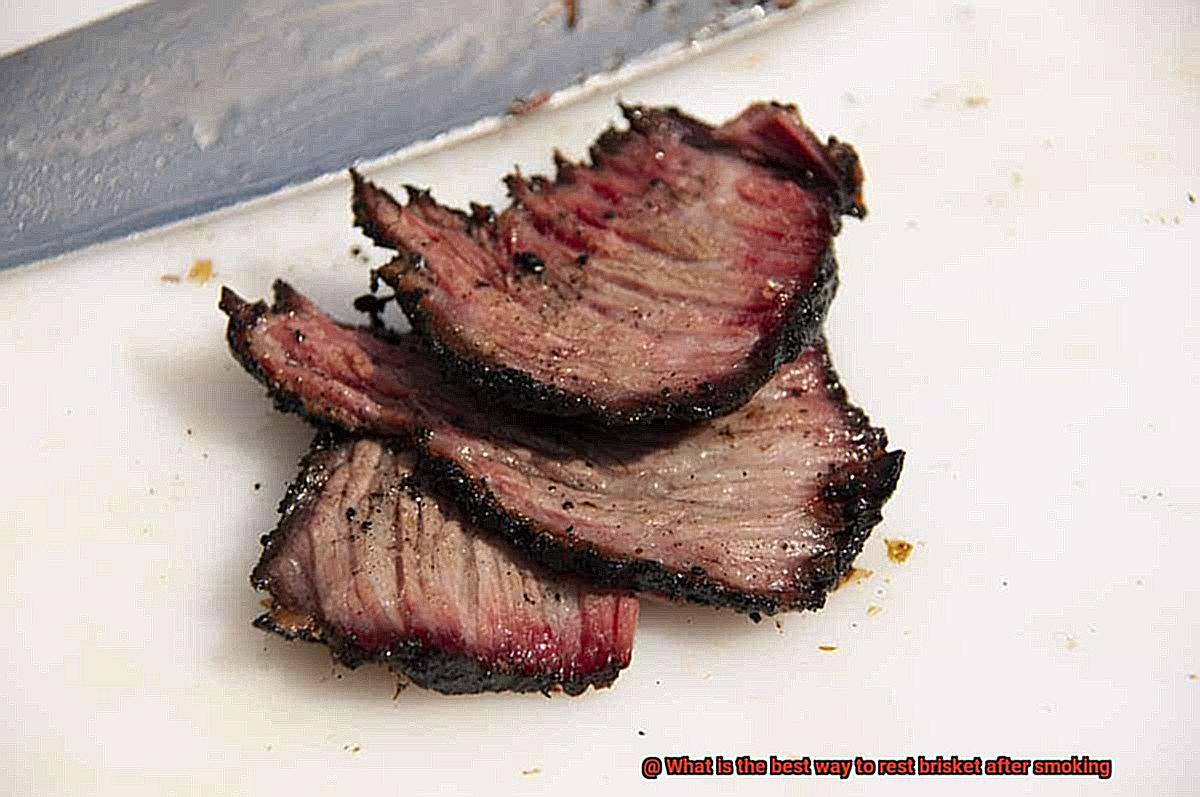
Think of a brisket as a beautiful symphony – each part plays its own note and contributes to the overall melody. And when it reaches an internal temperature between 195-205°F, it’s like hitting the perfect crescendo.
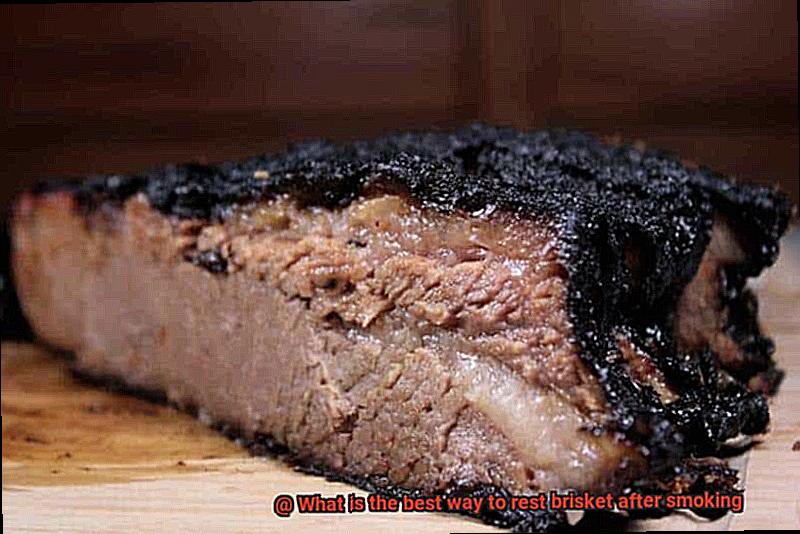
That’s when you know it’s time to remove it from the smoker and wrap it in foil or butcher paper. But why is this temperature range so crucial?
It’s because it’s where the magic happens. The collagen in the meat breaks down, resulting in a more tender and flavorful brisket.
It’s like a caterpillar transforming into a butterfly – it may not look pretty in the smoker, but once it hits that perfect internal temperature, it transforms into a beautiful masterpiece. However, different parts of the brisket may cook at different rates, so it’s crucial to check the internal temperature in multiple locations using a meat thermometer inserted into the thickest part.
Once your brisket has reached that perfect internal temperature, carefully remove it from the smoker using heat-resistant gloves or tongs. Now comes the resting period – time to let your symphony settle and cool down before serving.
Letting your brisket rest for at least 30 minutes allows the juices to redistribute throughout the meat, resulting in a more flavorful and tender final product. Some pitmasters even suggest resting for up to four hours depending on its size.
But what about wrapping? Foil can help retain more moisture, but it can also create a steaming effect that softens the bark on the outside of your brisket.
Butcher paper allows for more airflow and results in a firmer bark but may result in slightly less moisture retention. It’s all about personal preference and finding what works best for you.
Wrapping for Moisture Retention and Bark Preservation
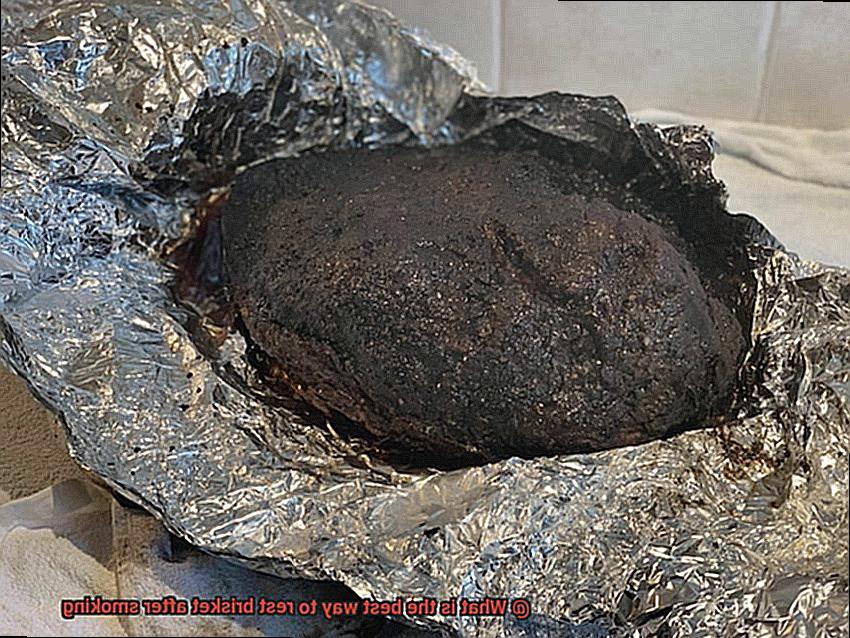
You may be wondering how wrapping your brisket can help. Wrapping your brisket in foil or butcher paper helps to retain moisture, ensuring the meat stays juicy and succulent.
Additionally, it helps to preserve the bark – that delicious crust that forms on the surface of your brisket during smoking. It’s like giving your brisket a cozy blanket to snuggle up in after a long day in the smoker.
When choosing between foil and butcher paper, foil provides a tight seal and locks in moisture, making it ideal for those who want to keep their meat ultra-moist. Alternatively, if you’re looking to preserve the bark while still maintaining moisture, then butcher paper is your best bet.
It allows the meat to breathe, preventing any sogginess while helping preserve that flavorful bark. Plus, it’s also an environmentally friendly option.
Wrapping your brisket is a breeze. Once your brisket reaches an internal temperature of around 165°F, take it out of the smoker and wrap it tightly in either foil or butcher paper, ensuring that all sides are covered.
Then return it to the smoker until it reaches its final internal temperature of 195-203°F. After your brisket has reached its final internal temperature, remove it from the smoker and let it rest for at least 30 minutes before unwrapping.
This allows the juices to redistribute throughout the meat, resulting in a tender and juicy final product. In summary, wrapping your brisket is an easy way to ensure moist and flavorful meat.
Whether you choose foil or butcher paper, wrapping your brisket helps retain moisture and preserve that coveted bark.
Time to Rest: Minimum of One Hour
There’s one crucial step you can’t skip: resting your brisket for a minimum of one hour after smoking. Just like a marathon runner needs to cool down and recover after crossing the finish line, your brisket needs time to rest and redistribute its juices.
Resting your brisket for at least an hour lets it continue cooking and allows the juices to flow throughout the meat, resulting in a tender, juicy, and flavorful brisket. But don’t just plop your brisket down on the heat source; remove it from the smoker and let it rest in a warm place like a cooler or an oven set to a low temperature.
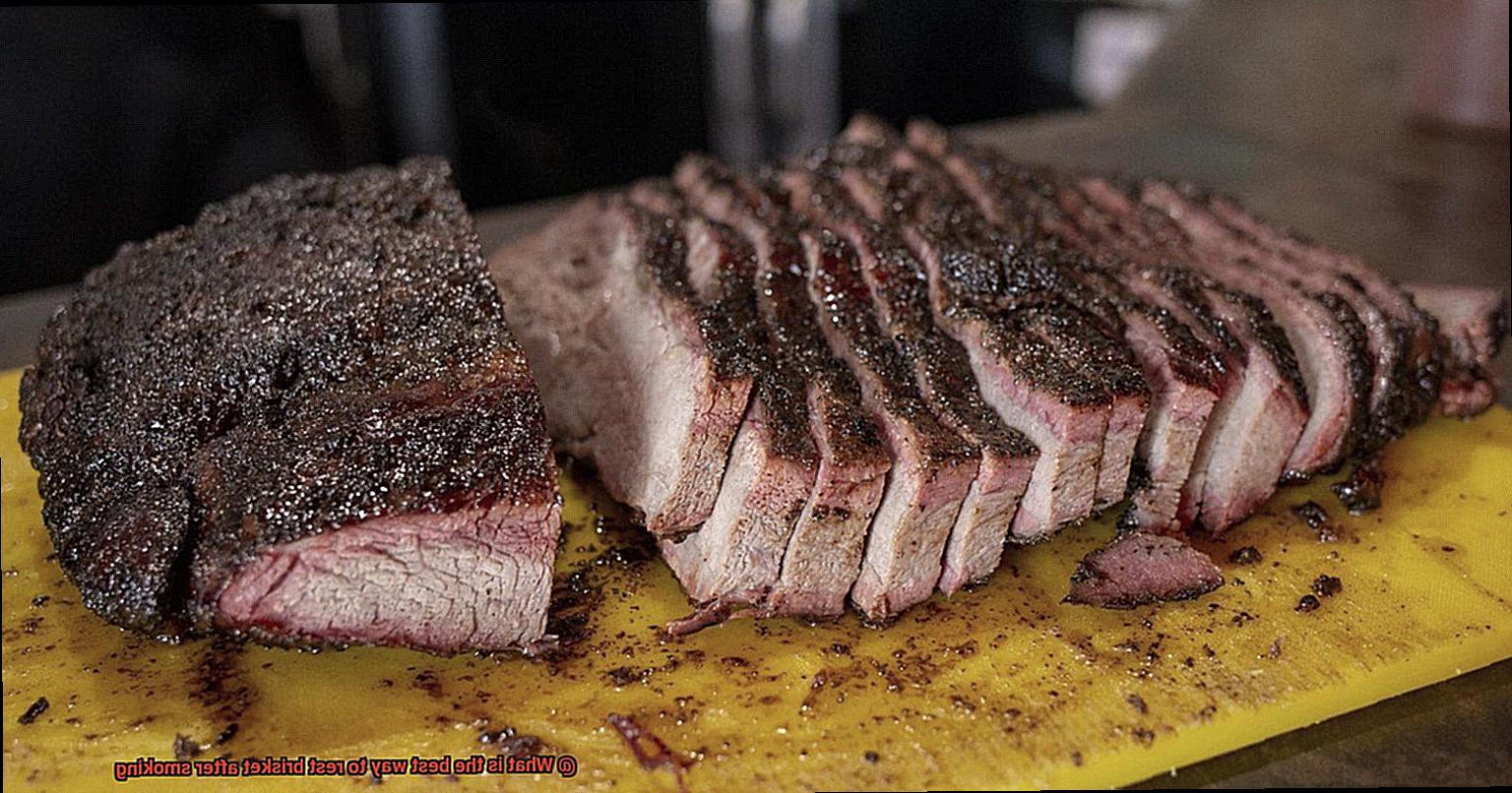
And if you want to go the extra mile, wrap your brisket in foil or butcher paper during resting to retain its moisture. It’s like wrapping yourself up in a cozy blanket on a chilly night.
However, be careful not to overdo it with the resting time. Resting your brisket for too long can make it dry and lose its texture, which is not what we’re going for.
Carve that bad boy up within four hours of resting to ensure that you get the perfect texture and flavor that you deserve. In summary, resting your brisket for a minimum of one hour after smoking is vital to achieving a mouth-watering final product.
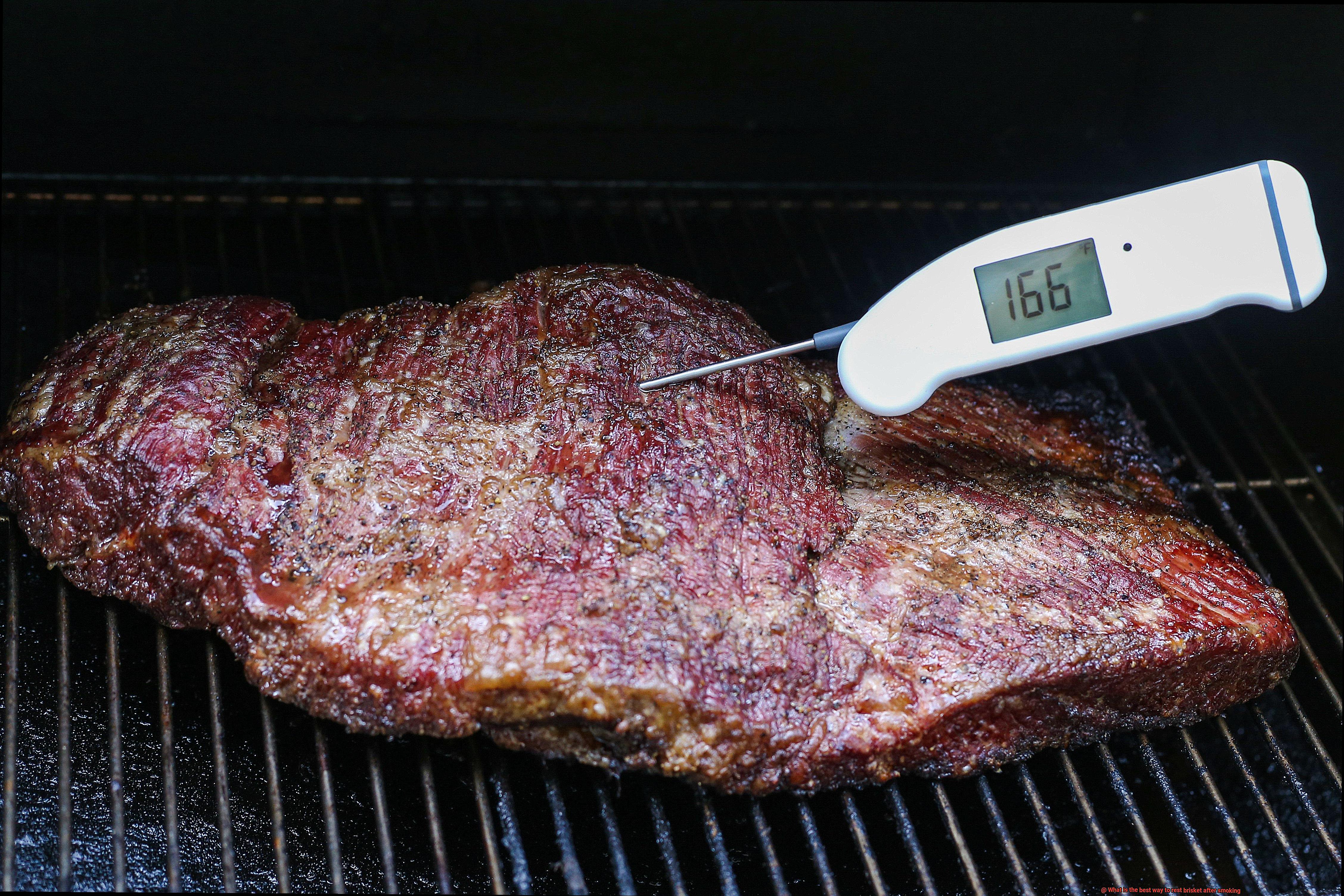
Let it rest in a warm place, wrap it up if you’d like, but don’t let it rest for too long.
Monitor Internal Temperature During Resting Period
You’ve done the hard work, and now it’s time to let your brisket rest.
But don’t be fooled into thinking your job is done just yet. The resting period is a crucial step in smoking brisket, and monitoring the internal temperature is essential to ensure you end up with a perfectly cooked and tender brisket.
During the resting period, residual heat spreads throughout the meat, and the internal temperature continues to rise. This is why it’s crucial to monitor the internal temperature of your brisket to ensure it hits that sweet spot of around 200°F.
However, bear in mind that this temperature may vary depending on factors like the size of your brisket and cooking time. To monitor the internal temperature of your brisket during resting period, you’ll need a trusty meat thermometer.
Insert it into the thickest part of the brisket (taking care not to touch any bones), and leave it in place until it reaches your desired temperature. It may take some time, but trust us; it’s worth it.
One critical thing to note is that you should not remove the brisket from the smoker until it has reached its ideal internal temperature. Doing so too early can make it dry and tough – something we want to avoid at all costs.
Once your brisket has reached its ideal internal temperature, take it out of the smoker and wrap it in foil or butcher paper. Let it rest for at least an hour, during which time the internal temperature will continue to rise, and the juices will redistribute throughout the meat.
Don’t underestimate the importance of this resting period. It’s what sets apart a good brisket from an exceptional one.
Slice Against the Grain for Maximum Tenderness
Slicing brisket is like conducting a symphony – it takes skill, precision, and attention to detail.
And just like a musical masterpiece, the key to achieving maximum tenderness and flavor is to cut against the grain. The grain of the meat refers to the lines of muscle fibers that run through it, creating a melody of texture and taste.
Cutting parallel to these fibers is like playing the wrong notes – it destroys the harmony and leaves you with tough, chewy meat. Instead, look for the lines of muscle fibers on the surface of the brisket and slice perpendicular to them.
This breaks up the fibers and makes the meat more tender and delicious. It’s like hitting all the right notes – each slice is perfectly in tune and melts in your mouth.
But it’s not just about the direction of your cuts – you also need a sharp knife. A dull knife tears the meat instead of cutting cleanly through it, leaving you with a jumbled mess of notes.
Take your time and make slow, deliberate cuts to ensure each slice is as tender and delicious as possible. And don’t forget – different parts of the brisket require different slicing techniques.
The flat or lean portion should be sliced thinly against the grain, while the point or fatty portion should be sliced into thicker pieces, still against the grain. This ensures that each bite is perfectly balanced in texture and flavor.
By mastering the art of slicing against the grain, you can create a symphony of flavor in every bite of your smoked brisket.
Add Juices From the Resting Period Back Onto the Sliced Brisket
Slicing a brisket is the ultimate expression of a pitmaster’s prowess.
But there’s one final step that can elevate your brisket from good to legendary – adding the juices from the resting period back onto the sliced meat. This is not just about flavor, it’s about ensuring that your brisket is juicy, tender, and unforgettable.
Once you’ve smoked your brisket, it needs to rest for at least an hour before slicing. During this time, the juices in the meat will redistribute, making it even more succulent.
But don’t let those precious juices go to waste. Collect them from the cutting board or foil and use them to take your brisket to the next level.
To do this, lay a large sheet of aluminum foil on a cutting board and carefully transfer the rested brisket onto it. Be sure not to lose any of the accumulated juices.
Then, slice the brisket against the grain into thin slices. Now comes the moment of truth.
Pour any collected juices back onto the meat. Watch as they seep into every crevice, imbuing your brisket with an extra burst of moisture and flavor.
For an even bigger flavor explosion, mix the juices with your favorite BBQ sauce or seasoning. But beware – too much juice can make your brisket soggy.
So use a light hand when adding them back onto the meat. A little goes a long way in enhancing the flavor without overpowering it.
pJHGRA0sW9A” >
Conclusion
As any BBQ pitmaster will tell you, resting your brisket after smoking is a crucial step in achieving the perfect final product.
It’s the time when all the magic happens – the juices redistribute and the flavors meld together to create a moist, tender, and delicious brisket. There are a few options for how to rest your brisket, but the key is to remove it from the smoker at the right internal temperature (between 195-205°F) and let it rest for at least 30 minutes to an hour in a warm place.
This allows for optimal flavor development and ensures that your brisket doesn’t dry out. One popular method of resting is wrapping your brisket in either foil or butcher paper.
Foil provides a tight seal, which helps retain moisture and preserve that coveted bark. Butcher paper, on the other hand, allows for more airflow and results in a firmer bark.
Either way, you’ll end up with a mouth-watering final product. When it comes time to slice your brisket, make sure you’re doing it against the grain with a sharp knife.
This ensures maximum tenderness and flavor in each bite. And don’t forget to add back any collected juices from the resting period onto your sliced brisket – it’s like adding an extra layer of flavor.

